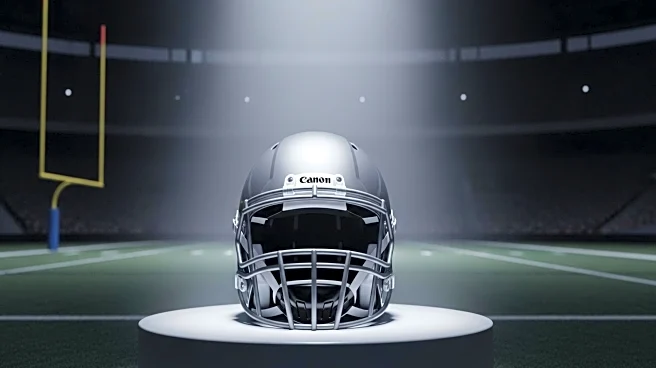What's Happening?
The NCAA targeting rule in college football, implemented in 2008, aims to penalize dangerous hits to enhance player safety. The rule defines targeting as a player taking aim at an opponent for forcible contact beyond a legal tackle or block. Penalties include a 15-yard penalty and automatic disqualification for the player committing the foul. If the foul occurs in the second half, the player is suspended for the first half of the next game. The rule has evolved over the years, with amendments in 2013 and 2019 to include video reviews and further punishments for repeat offenders. The rule is distinct from the NFL's unnecessary roughness penalty, which does not automatically disqualify players.
Why It's Important?
The targeting rule is significant as it addresses the growing concern for player safety, particularly in preventing traumatic brain injuries. By enforcing strict penalties, the NCAA aims to deter players from engaging in dangerous plays, thereby reducing the risk of serious injuries. The rule's implementation reflects a broader trend in sports towards prioritizing athlete health and safety. It also highlights the differences in how college football and the NFL approach player protection, with the NCAA adopting a more stringent stance on disqualifications.
What's Next?
The targeting rule continues to be a point of contention, with calls for further refinement to address perceived intent and levels of targeting. As the NCAA reviews and potentially amends the rule, stakeholders such as coaches, players, and officials will likely engage in discussions to balance safety with the competitive nature of the sport. The ongoing evolution of the rule may lead to more sophisticated video review processes and adjustments in penalties to ensure fair enforcement.
Beyond the Headlines
The targeting rule's impact extends beyond immediate player safety, influencing coaching strategies and player training. Coaches must emphasize proper tackling techniques to avoid penalties, while players need to adapt to stricter enforcement. The rule also raises ethical considerations about the balance between aggressive play and safety, prompting discussions on the cultural aspects of football and its evolution.












